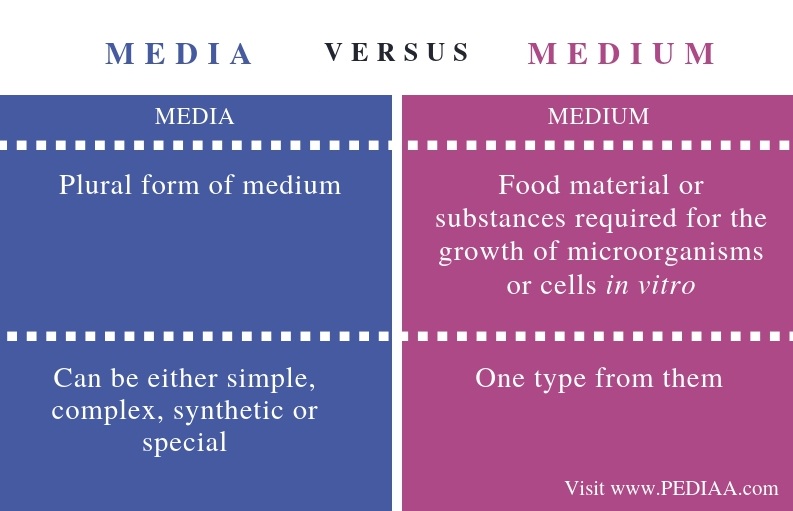Medium Duty 4×4 Trucks For Sale: Your Ultimate Buying Guide cars.truckstrend.com
In a world demanding both robust capability and all-terrain versatility, medium-duty 4×4 trucks stand as the undisputed workhorses. More powerful than their light-duty counterparts but less cumbersome than heavy-duty giants, these vehicles strike a critical balance, offering immense utility for a diverse range of applications. Whether you’re a contractor needing to haul heavy equipment across challenging job sites, an emergency service provider requiring reliable access to remote locations, an overland adventurer seeking the ultimate expedition platform, or a farmer navigating rough terrain, a medium-duty 4×4 truck could be the perfect solution.
This comprehensive guide aims to demystify the process of finding and purchasing a medium-duty 4×4 truck. We’ll delve into what defines these formidable machines, explore their benefits, highlight crucial buying considerations, discuss popular models, and provide practical advice to ensure you make an informed decision.
Medium Duty 4×4 Trucks For Sale: Your Ultimate Buying Guide
What Defines a Medium Duty 4×4 Truck?
Medium-duty trucks are generally categorized by their Gross Vehicle Weight Rating (GVWR), which is the maximum operating weight of the vehicle as specified by the manufacturer, including the vehicle’s chassis, body, engine, fluids, fuel, accessories, driver, passengers, and cargo. For medium-duty vehicles, this typically falls into:
- Class 4: 14,001 – 16,000 lbs GVWR
- Class 5: 16,001 – 19,500 lbs GVWR
- Class 6: 19,501 – 26,000 lbs GVWR
The addition of "4×4" signifies that these trucks are equipped with a four-wheel-drive system, allowing power to be sent to all four wheels simultaneously. This capability is crucial for navigating unpaved roads, slippery conditions, steep inclines, mud, snow, and other challenging off-road environments where standard two-wheel drive vehicles would struggle.

Key characteristics that set medium-duty 4×4 trucks apart include:
- Robust Chassis and Drivetrain: Built with commercial-grade components designed for heavy loads and continuous operation.
- Higher Payload and Towing Capacities: Significantly greater than consumer-grade light-duty pickups.
- Specialized Suspension and Axles: Engineered to handle the stresses of heavy hauling and off-road abuse.
- Often Diesel-Powered: Diesel engines provide superior torque, fuel efficiency under load, and longevity for demanding tasks.
- Chassis Cab Configuration: Many medium-duty trucks are sold as "chassis cabs," meaning they come without a rear body, allowing for extensive customization with various vocational bodies (e.g., utility, flatbed, dump, ambulance, service, or even custom expedition campers).

Why Choose a Medium Duty 4×4? Benefits and Advantages
The decision to invest in a medium-duty 4×4 truck is often driven by a specific set of needs that light-duty trucks simply cannot meet. Here are the compelling benefits:
- Unmatched Versatility: From commercial applications like construction, landscaping, utility work, and municipal services to personal endeavors such as heavy RV towing, horse hauling, or extreme overlanding, these trucks adapt to a wide array of demands.
- Superior Capability: Their primary advantage lies in their raw power. With significantly higher payload capacities (often measured in tons, not just pounds) and impressive towing ratings (easily exceeding 20,000 lbs), they can transport heavy machinery, large trailers, and substantial cargo that would overwhelm smaller vehicles.
- All-Terrain Mastery: The integrated 4×4 system transforms these workhorses into go-anywhere machines. They provide the traction and control needed to access remote job sites, navigate treacherous backroads, or ensure critical services can reach areas affected by severe weather or natural disasters.
- Durability and Longevity: Built to commercial standards, medium-duty trucks are engineered for endurance. Their heavy-duty components and robust construction mean they can withstand years of rigorous use, often outlasting several light-duty trucks in demanding environments.
- Customization Potential: The chassis cab design allows for unparalleled customization. This flexibility enables businesses and individuals to tailor the truck precisely to their operational needs, whether it’s adding specialized equipment, a custom service body, or a luxurious overland living module.
Key Considerations Before Buying
Purchasing a medium-duty 4×4 truck is a significant investment. Careful consideration of your specific requirements and available options is paramount.
- Intended Use and GVWR: This is your starting point. What will you primarily use the truck for? How much weight (payload + passengers + equipment) will it carry, and how heavy will your heaviest trailer be? This will dictate the necessary GVWR class (Class 4, 5, or 6) and inform your engine, axle, and frame choices. Always factor in a buffer for unexpected loads.
- Engine and Drivetrain:
- Diesel vs. Gasoline: Most medium-duty trucks are diesel-powered due to their superior torque for hauling, better fuel economy under load, and longer lifespan. Gasoline options exist, typically offering a lower initial cost but higher fuel consumption and less pulling power for extreme loads.
- Transmission: Automatic transmissions are standard for ease of use, but manual options might be available on older or specialized models.
- 4×4 System: Understand the transfer case (part-time, full-time, auto 4WD) and differential lock options. Part-time 4×4 is common, offering high and low range, but isn’t for continuous highway use.
- Cab Configuration:
- Regular Cab: Two doors, maximum bed/body length, minimal passenger space.
- Extended/Super Cab: Smaller rear seating area, often with suicide doors.
- Crew Cab: Four full doors, ample rear passenger space – ideal for teams or families.
- Axle Ratios and Tires: Axle ratios impact towing capacity, fuel economy, and top speed. Lower (numerically higher) ratios provide more torque for heavy loads but reduce top speed and fuel efficiency. Heavy-duty tires with appropriate load ratings are non-negotiable for safety and performance.
- Maintenance and Parts Availability: Commercial-grade parts can be more expensive and sometimes require specialized technicians. Research the availability of parts and service centers in your area for your chosen brand and model.
- Licensing and Regulations: In many jurisdictions, trucks exceeding certain GVWRs (e.g., 26,001 lbs) or those used for commercial purposes may require a Commercial Driver’s License (CDL). Be sure to understand your local and state regulations for the GVWR class you are considering.
- Budget: Purchase and Operating Costs: Beyond the sticker price, factor in fuel, insurance (which can be significantly higher for commercial vehicles), maintenance, tires, and potential upfitting costs.
Popular Manufacturers and Models
While the market for medium-duty 4×4 trucks is more specialized than light-duty pickups, several prominent manufacturers offer excellent options, primarily in chassis cab configurations that are then upfitted by third-party companies.
- Ford: The F-Series Super Duty Chassis Cab line includes the F-450, F-550, and the newer F-600, all available with 4×4. These are perennial favorites known for their robust powertrains (Power Stroke diesel engines) and widespread dealer support.
- Ram: Ram’s Chassis Cab lineup, including the 4500 and 5500, offers strong alternatives with Cummins diesel engine options, renowned for their durability and torque.
- Chevrolet/GMC: The Silverado/Sierra 4500HD, 5500HD, and 6500HD Chassis Cab models provide a competitive option, often featuring Duramax diesel engines and Allison transmissions, known for their reliability.
- International/Navistar: For heavier Class 6 applications, International offers models like the CV Series, often built on a shared platform with GM, providing a robust option for vocational use.
- Isuzu/Fuso (Cab-Over): While less common as dedicated 4x4s in North America, some international manufacturers offer medium-duty cab-over designs (like the Isuzu N-Series 4×4 or Fuso Canter 4×4) that are highly maneuverable and popular for specialized urban or off-road applications.
The Buying Process: New vs. Used
The decision between new and used often comes down to budget, customization needs, and urgency.
- New Medium Duty 4×4:
- Pros: Full warranty, latest technology, complete customization from the chassis up, peace of mind.
- Cons: Higher initial cost, potential wait times for custom orders.
- Used Medium Duty 4×4:
- Pros: Significant cost savings, immediate availability, often already upfitted for a specific purpose (which may or may not suit your needs), depreciation has already occurred.
- Cons: No warranty (or limited), potential for wear and tear, unknown maintenance history, may require repairs or modifications.
- Tips for Used:
- Thorough Inspection: Beyond a visual check, hire an independent mechanic specializing in commercial trucks for a pre-purchase inspection. Focus on the frame (rust, cracks), drivetrain (engine, transmission, transfer case, differentials), brakes, and suspension.
- Service Records: Request complete maintenance history. A well-maintained truck is a better investment.
- Previous Use: Understand how the truck was previously used (e.g., severe commercial duty, light personal use). This impacts expected wear.
- Check for Upfit Quality: If it comes with a body, inspect its condition and the quality of the installation.
Where to Look:
- Commercial Truck Dealerships: Specialize in new and used medium-duty vehicles.
- Large Franchise Dealerships: Many Ford, Ram, Chevy, and GMC dealers have commercial sales divisions.
- Online Marketplaces: Websites like CommercialTruckTrader.com, TruckPaper.com, and even general sites like eBay or Facebook Marketplace (with caution) can list trucks.
- Auctions: Government, fleet, and commercial auctions can be sources for good deals, but require expertise to assess condition quickly.
Financing, Insurance, and Operating Costs
These aspects are often more complex and costly for medium-duty trucks than for personal vehicles.
- Financing: Commercial loans are common, often requiring a business plan or established credit history. Personal loans might be an option for individual buyers. Lease agreements are also available for businesses seeking tax advantages or lower monthly payments.
- Insurance: Expect higher premiums. Commercial policies are often necessary, and rates vary based on GVWR, intended use, driver history, and coverage limits.
- Operating Costs:
- Fuel: Medium-duty trucks, especially diesels, can have large fuel tanks but also higher fuel consumption, particularly when loaded or off-road.
- Maintenance: Tires, oil changes, brake jobs, and routine service intervals are crucial. Parts can be more expensive.
- Repairs: Complex components mean repairs can be costly if not under warranty.
- Licensing and Registration: Higher fees based on GVWR.
Customization and Upfitting Potential
This is where medium-duty 4×4 trucks truly shine. Their chassis cab design makes them ideal platforms for a wide range of specialized applications:
- Utility & Service Bodies: For contractors, electricians, plumbers, and telecommunications companies.
- Flatbeds & Stake Beds: For hauling materials, equipment, or large cargo.
- Dump Bodies: Essential for construction, landscaping, and waste management.
- Ambulances & Rescue Vehicles: Critical for emergency services needing off-road access.
- Plow Trucks & Salt Spreaders: For winter maintenance.
- Cranes & Lift Gates: For heavy lifting and loading.
- Expedition Vehicles & RVs: For serious overlanders, custom living modules can be built directly onto the chassis, offering unparalleled off-road capability and self-sufficiency.
Always ensure that any upfitting is performed by qualified professionals to maintain safety, structural integrity, and proper weight distribution.
Practical Advice and Actionable Insights
- Define Your Needs Precisely: Before you even look at a truck, write down your absolute minimum and ideal requirements for payload, towing, passenger capacity, and off-road capability.
- Total Cost of Ownership: Look beyond the purchase price. Factor in fuel, insurance, maintenance, potential repairs, and upfitting.
- Pre-Purchase Inspection is Non-Negotiable: Especially for used trucks, invest in a professional inspection. It can save you thousands in unexpected repairs.
- Understand Regulations: Research CDL requirements, weight limits, and specific vehicle regulations for your state or province.
- Test Drive Thoroughly: Don’t just drive it around the block. If possible, test it with a load similar to what you’ll be hauling, and try it in conditions similar to what you’ll encounter (e.g., a dirt road if you plan on off-roading).
Medium Duty 4×4 Trucks For Sale: Estimated Price Ranges
The price of a medium-duty 4×4 truck varies wildly based on whether it’s new or used, its specific class (GVWR), engine type, mileage, condition, and any installed upfitting. The table below provides broad estimates for the North American market.
| Category | Typical Price Range (USD) | Key Factors Affecting Price |
|---|---|---|
| New Chassis Cab (Class 4-5) | $60,000 – $100,000+ | GVWR class, engine choice (diesel typically higher), transmission, 4×4 system type, cab configuration (crew cab most expensive), optional features, dealer markup. |
| Used Chassis Cab (Class 4-5) | $25,000 – $70,000 | Age, mileage, condition (rust, wear), engine hours, service history, previous use (commercial fleet vs. personal), brand/model popularity, market demand. |
| New Fully Upfitted (Class 4-6) | $80,000 – $200,000+ | Base chassis cost + cost of specific body (utility, dump, flatbed, service, crane, etc.), complexity of upfit, additional equipment (compressors, generators, welders), specialized interior/exterior modifications. |
| Used Fully Upfitted (Class 4-6) | $30,000 – $150,000+ | Age of chassis and upfit, mileage, condition of both chassis and body, type of upfit (specialized upfits hold value), remaining useful life of specialized equipment, brand/model. Highly specialized expedition vehicles can exceed $200,000 even used. |
| Class 6 Chassis Cab (New) | $85,000 – $150,000+ | Higher GVWR, more robust components, typically larger diesel engines, often more specialized for heavy commercial applications. |
Note: These are general estimates. Prices can fluctuate significantly based on market conditions, location, specific features, and the overall economic climate.
Frequently Asked Questions (FAQ)
Q1: What is the typical GVWR range for a medium-duty truck?
A1: Medium-duty trucks typically fall into Class 4 (14,001-16,000 lbs GVWR), Class 5 (16,001-19,500 lbs GVWR), and Class 6 (19,501-26,000 lbs GVWR).
Q2: Do I need a CDL to drive a medium-duty 4×4 truck?
A2: Generally, if the truck’s GVWR is 26,000 lbs or less, you do not need a CDL for personal use. However, if the GVWR exceeds 26,000 lbs, or if you are using the truck for commercial purposes, especially for hire, or if it’s combined with a trailer that puts the Gross Combination Weight Rating (GCWR) over 26,000 lbs, a CDL may be required. Always check your specific state/provincial regulations.
Q3: Are medium-duty 4×4 trucks suitable for personal use, like towing an RV?
A3: Absolutely. Many individuals purchase them specifically for towing large recreational vehicles, horse trailers, or for use as the base for an expedition or overland vehicle. Their increased payload and towing capacity make them ideal for these heavy-duty personal applications.
Q4: What’s the difference between a "chassis cab" and a "pickup truck"?
A4: A chassis cab is sold as just the truck’s frame, engine, cab, and front axle, without a factory-installed bed or rear body. This allows for custom upfitting with vocational bodies (e.g., flatbed, dump body, service body, or RV module). A pickup truck comes with a factory-installed bed. Medium-duty trucks are almost exclusively sold as chassis cabs.
Q5: What unique maintenance considerations should I be aware of for medium-duty 4×4 trucks?
A5: Expect higher costs for parts and labor, as components are larger and more robust. Diesel engines often require specific maintenance routines (e.g., DEF fluid, fuel filter changes). Tires are more expensive and need to be load-rated correctly. Specialized diagnostic tools might be needed for some issues.
Q6: Can I convert a medium-duty 4×4 into an RV or expedition vehicle?
A6: Yes, this is a popular application. Their robust chassis, high payload capacity, and 4×4 capability make them excellent platforms for custom expedition vehicles or full-time RVs capable of navigating challenging terrains and extended off-grid living.
Conclusion
Medium-duty 4×4 trucks represent the pinnacle of versatility and capability for those whose needs exceed the limits of conventional light-duty vehicles. They are powerful, durable, and adaptable machines, essential for a wide range of commercial, municipal, and personal applications where heavy loads and challenging terrain are the norm. By carefully considering your specific requirements, understanding the various options, and conducting thorough research, you can confidently navigate the market and acquire the perfect medium-duty 4×4 truck to conquer any task or adventure that lies ahead. Invest wisely, and your medium-duty 4×4 will serve as a reliable partner for years to come.

